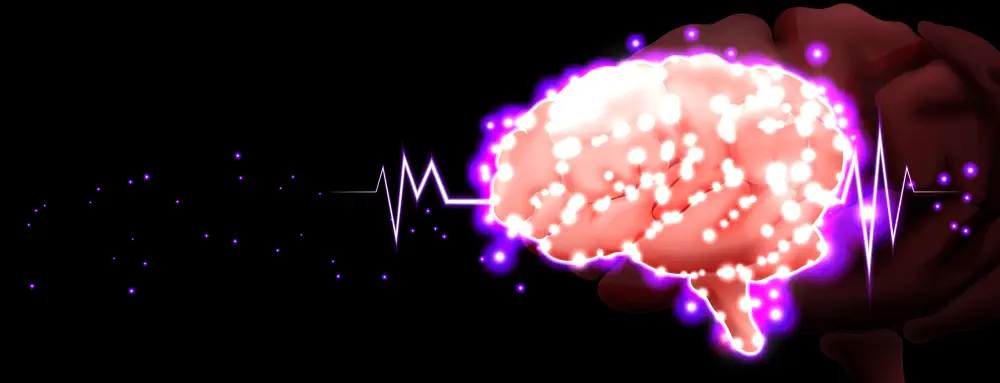We offer medical detox and multiple addiction treatment options in our
luxury treatment centres in Port Hope, Cobourg, and Ottawa.
How Does Semaglutide Help with Alcohol Addiction?
Struggling with alcohol dependency often means facing a daily battle against cravings that feel impossible to control. You've tried willpower. You've promised yourself "just one drink" countless times. The pattern continues despite the damage to your health, relationships, and life goals. What if a medication originally designed for diabetes could help break this cycle?
Semaglutide—the drug making headlines as Ozempic and Wegovy—recently demonstrated surprising effectiveness in reducing alcohol consumption and cravings. Clinical trials show that this medication for alcohol cravings works differently than traditional treatments, targeting brain pathways involved in both eating and drinking behaviours.

Key Takeaways:
- Semaglutide reduces heavy drinking: Recent clinical trials found participants taking this medication for alcohol cravings experienced 40-50% reductions in drinks per drinking day and alcohol craving reduction compared to placebo groups.
- Brain pathway mechanism: Semaglutide and alcohol cravings are connected through GLP-1 receptors in reward centers—the same neural circuits that drive both eating and substance use behaviours.
- Low doses show promise: Studies testing semaglutide dosage for alcohol cravings found that 0.25mg to 0.5mg weekly (lower than weight loss doses) effectively decreased alcohol intake with minimal side effects.
- Not a standalone solution: Maximum benefit comes from combining semaglutide with behavioural therapy and integrated addiction treatment rather than relying on medication alone.
- Research is early but promising: While not yet approved for alcohol dependence treatment, ongoing trials are exploring semaglutide's alcohol addiction applications with encouraging results for reducing alcohol consumption.
How Does Semaglutide Change Your Brain's Reward System?
Your doctor might have prescribed semaglutide to manage type 2 diabetes or to support weight loss. The drug belongs to a class called GLP-1 receptor agonists, which mimic a natural gut hormone that regulates blood sugar, appetite, and feelings of fullness after eating.
The connection to alcohol dependence treatment emerges from shared neurobiology. Brain regions controlling eating behaviours overlap extensively with circuits driving substance use, creating a biological link that researchers are now exploiting.
Patients taking semaglutide for weight management spontaneously reported they'd stopped wanting alcohol. These anecdotal reports prompted a formal investigation. A phase 2 randomized clinical trial at UNC tested semaglutide in 48 adults with alcohol use disorder, finding that low-dose treatment reduced both alcohol consumption during laboratory testing and weekly alcohol cravings compared to placebo.
GLP-1 is a gut hormone that stimulates insulin secretion, promotes fullness, and reduces hunger cravings. When semaglutide activates these pathways, it appears to dampen the reward signal from alcohol. The compulsive pull lessens, creating space for conscious choice rather than automatic behaviour.
How Semaglutide Reduces Alcohol Cravings in the Brain?
Semaglutide and alcohol cravings connect through a sophisticated network of brain chemistry. When you drink alcohol, it triggers dopamine release in specific neural structures that create feelings of pleasure and reward. Over time, these pathways become hypersensitive, driving the intense cravings that define addiction.
GLP-1 receptors are located in key reward-processing zones, including the hypothalamus, nucleus accumbens, and ventral tegmental area. These locations form the core of your brain's reward circuitry.
The ventral tegmental area (VTA) contains dopamine-producing neurons that project to the nucleus accumbens (NAc), forming what scientists refer to as the mesolimbic dopamine system. This pathway lights up when you experience anything rewarding: food, sex, drugs, or alcohol. Semaglutide appears to suppress alcohol intake, possibly via a reduction in alcohol-induced reward and nucleus accumbens-dependent mechanisms.
Evidence from Animal Studies
Animal research provides detailed insights impossible to obtain in humans. Studies in rats demonstrated that semaglutide at doses of 0.026 and 0.052 mg/kg profoundly and dose-dependently suppressed alcohol drinking in both male and female animals. The effects persisted throughout repeated treatment without developing tolerance.
Brain Chemistry Changes
Brain imaging reveals another layer. Semaglutide increases GABAergic transmission in the central nucleus of the amygdala and insular cortex—neural structures critically involved in alcohol-related behaviours. GABA is your brain's primary inhibitory neurotransmitter, essentially applying the brakes to overactive circuits.The practical translation? Reducing alcohol consumption becomes easier when your brain's reward response to drinking diminishes. You're not fighting against the same intensity of craving that previously overwhelmed your willpower.

What Do Clinical Trials Show About Semaglutide and Alcohol Dependence Treatment?
Recent evidence reveals consistent semaglutide alcohol addiction treatment potential across multiple study designs.
The UNC randomized trial found that semaglutide significantly reduced drinks per drinking day, with medium to large effect sizes for alcohol consumed and peak breath alcohol concentration. Participants were not initially seeking treatment, yet they still showed marked improvements.
Real-world evidence strengthens the case. A retrospective study of 83,825 patients with obesity found that semaglutide was associated with a 50-56% lower risk for both the incidence and recurrence of alcohol use disorder over 12 months. Swedish registry data showed a decreased risk of hospitalization during GLP-1 agonist use.
Safety data provides reassurance. With 96% of those in the medication group finishing the study, researchers concluded that the drug was safe and well-tolerated. Common side effects—primarily mild nausea—proved manageable for most participants.
How does this compare with existing medications for alcoholism? The effects appear potentially larger than current FDA-approved options, though head-to-head trials haven't yet been conducted.
Why Is the Dosage Different for Alcohol Than for Weight Loss?
Semaglutide dosage for alcohol cravings differs from the higher doses prescribed for weight loss. This distinction is important for both safety and accessibility.
The clinical trial tested a gradual escalation protocol: 0.25 mg per week for four weeks, 0.5 mg per week for four weeks, and 1.0 mg for one week. Researchers observed beneficial effects even at a weekly dose of 0.5 mg—half the standard weight loss maintenance dose.
Animal studies demonstrated that low semaglutide doses (0.026 and 0.052 mg/kg) profoundly suppressed alcohol drinking, defining a low dose that reduced alcohol consumption, potentially associated with fewer side effects. Lower doses mean better tolerability, which translates to higher treatment completion rates.
Benefits of Gradual Titration
The gradual titration approach serves multiple purposes. Starting at 0.25mg weekly allows your body to adjust to the medication before increasing the dose. This reduces the likelihood of nausea, the most common side effect that sometimes causes people to discontinue GLP-1 medications.
Weekly administration provides another advantage over daily medications. You don't need to remember pills every day. This once-weekly dosing schedule substantially improves adherence, especially for individuals whose alcohol withdrawal management disrupts daily routines.
Who might benefit most from medication for alcohol cravings using semaglutide? Early evidence suggests several profiles:
- People with concurrent obesity or type 2 diabetes who already have medical indications for semaglutide
- Individuals who haven't responded adequately to traditional medications for alcoholism, like naltrexone or acamprosate
- Those struggling with heavy drinking, rather than severe physiological dependence, require medical detoxification
- Patients seeking to reduce consumption rather than achieve complete abstinence initially
A case series of six patients receiving semaglutide for weight loss showed a marked reduction in Alcohol Use Disorder Identification Test (AUDIT) scores for all participants, demonstrating real-world effectiveness outside controlled trial settings.
Dosage matters. But medication represents only one component of effective recovery. Even the most precisely calibrated pharmaceutical intervention falls short without addressing the psychological and social dimensions of addiction.
What Type of Therapy Works Best with Semaglutide Treatment?
Combining semaglutide with behavioural therapy represents the most effective approach for sustained recovery. Medication addresses neurochemical cravings. Therapy tackles behavioural patterns, emotional triggers, and life circumstances fueling problematic drinking.
Cognitive-behavioural therapy (CBT) helps identify drinking triggers and develop coping strategies. When semaglutide reduces craving intensity, implementing CBT skills becomes easier. Motivational enhancement therapy addresses ambivalence about change. Group therapy provides peer support from others who understand recovery challenges.
The Canadian Centre for Addictions offers integrated programs combining medical treatment with psychological support. Alcohol craving reduction through medication creates an opportunity for therapeutic work to take root. When you're not constantly battling intense cravings, you can engage more fully in counselling sessions.
Alcohol withdrawal management requires medical supervision for safety. If you've developed physical dependence, attempting to stop drinking suddenly can trigger dangerous symptoms, including seizures.

Is Semaglutide Better Than Current Alcohol Addiction Medications?
Knowing how semaglutide compares with existing medications for alcoholism helps set realistic expectations. Health Canada has approved three medications for treating alcohol use disorder: disulfiram, naltrexone, and acamprosate.
Naltrexone blocks opioid receptors, reducing the pleasurable effects of alcohol. Oral naltrexone increased abstinence rates (number needed to treat of 20) and decreased heavy drinking (number needed to treat of 12). It works best for people aiming to reduce consumption or achieve abstinence.
Acamprosate affects glutamate and GABA pathways involved in alcohol reinforcement. Acamprosate reduced drinking compared with placebo, with a number needed to treat of 9 for preventing return to any drinking. Patients must have already stopped drinking before starting this medication.
Disulfiram creates unpleasant physical reactions when combined with alcohol—nausea, flushing, and rapid heartbeat. Evidence supporting disulfiram's effectiveness is limited, and compliance is a major limitation. It works only when taken under supervision.
Access can be challenging for patients without a drug plan, as treatment with naltrexone or acamprosate costs approximately $1,800 annually. This financial barrier prevents many Canadians from accessing evidence-based pharmacotherapy.
How Semaglutide Compares
Semaglutide offers several potential advantages:
- Once-weekly dosing versus daily pills improves adherence
- Lower side effect burden for many people compared to disulfiram's aversive reactions
- Doesn't require abstinence before starting, unlike acamprosate
- Additional health benefits for patients with diabetes or obesity
- May address multiple addictive behaviours simultaneously, including smoking
The medication isn't yet approved specifically for alcohol dependence treatment in Canada. Physicians can prescribe it off-label for patients with appropriate medical indications (diabetes or obesity) who also struggle with alcohol use. Several ongoing clinical trials will determine whether regulatory approval for this indication should be pursued.
What Does a Complete Alcohol Recovery Program Look Like?
Recovery from alcohol use disorder rarely succeeds through medication alone. Alcohol recovery options work best when addressing biological, psychological, and social factors.
Semaglutide represents one tool in a multifaceted treatment approach. Medical evaluation comes first, assessing dependence severity, co-occurring mental health conditions, and overall physical health. Treatment typically includes individual counselling, group therapy, family counselling, medication management, and continuing care planning.
The Canadian Centre for Addictions offers personalized treatment programs addressing your unique situation. We recognize that reducing alcohol consumption represents progress even if complete abstinence isn't immediately achieved.
Our clinical team stays informed about emerging treatments, including semaglutide alcohol addiction research. For appropriate candidates—particularly those with concurrent diabetes or obesity—we can coordinate care with your physician to explore whether this medication might enhance your recovery plan.
If you're ready to explore treatment options for alcohol use disorder, contact us at 1-855-499-9446. Our experienced team can evaluate your situation and create a personalized treatment plan addressing both your alcohol concerns and overall wellness needs.
FAQ
Does semaglutide work for substance abuse beyond alcohol?
Semaglutide treatment showed a significant effect on reducing cigarette smoking in trial participants who were current smokers, suggesting potential for broader substance use treatment applications. Research is exploring whether GLP-1 receptor agonists might help with opioid, stimulant, and other substance dependencies through similar reward pathway mechanisms.
Is semaglutide effective for AUD in people without diabetes or obesity?
Current clinical trial evidence includes participants without diabetes, but most semaglutide prescriptions require an approved indication (type 2 diabetes or obesity). Ongoing research will determine whether the medication proves effective enough for alcohol use disorder alone to warrant regulatory approval for this specific indication.
What medications help with alcohol addiction that are currently available in Canada?
Health Canada has approved naltrexone, acamprosate, and disulfiram for treating alcohol use disorder. Naltrexone reduces cravings and heavy drinking, acamprosate supports abstinence maintenance, and disulfiram creates unpleasant reactions when combined with alcohol. Access varies by province, with some requiring special authorization for public coverage.
How does semaglutide reduce alcohol intake compared to naltrexone?
Semaglutide reduced drinks per drinking day and alcohol craving with medium to large effect sizes during clinical trials. While direct comparison studies haven't been completed, preliminary evidence suggests potentially larger effects than existing FDA-approved medications, particularly at the lower doses tested for alcohol use disorder.
Can I start semaglutide while still drinking alcohol?
Unlike acamprosate, which requires several days of abstinence before starting, semaglutide can be initiated while someone is still drinking. Clinical trials enrolled participants who were actively consuming alcohol. However, a thorough medical evaluation remains necessary before starting any treatment for alcohol use disorder.
Should medication for alcohol cravings replace therapy and counselling?
Medication is more effective when counselling and other services are available to provide patients with a whole-person approach and support their recovery. Combining semaglutide with behavioural therapy addresses both neurochemical and psychological factors maintaining problematic drinking, leading to better long-term outcomes than medication alone.
Article Sources
Article sources
- Hendershot, C.S., et al. (2025). "Once-Weekly Semaglutide in Adults With Alcohol Use Disorder: A Randomized Clinical Trial." JAMA Psychiatry, 82(4), 325-334. Available at: https://jamanetwork.com/journals/jamapsychiatry/fullarticle/2829811
- Wang, W., et al. (2024). "Associations of semaglutide with incidence and recurrence of alcohol use disorder in real-world population." Nature Communications, 15, 4548. Available at: https://www.nature.com/articles/s41467-024-48780-6
- Klausen, M.K., et al. (2025). "Repurposing Semaglutide and Liraglutide for Alcohol Use Disorder." JAMA Psychiatry, 82(1), 20-28. Available at: https://jamanetwork.com/journals/jamapsychiatry/fullarticle/2825650
- Aranäs, C., et al. (2023). "Semaglutide reduces alcohol intake and relapse-like drinking in male and female rats." eBioMedicine, 93, 104642. Available at: https://www.thelancet.com/journals/ebiom/article/PIIS2352-3964(23)00207-4/fulltext
- Chuong, V., et al. (2023). "The glucagon-like peptide-1 (GLP-1) analogue semaglutide reduces alcohol drinking and modulates central GABA neurotransmission." JCI Insight, 8(12), e170671. Available at: https://insight.jci.org/articles/view/170671
- Richards, J., et al. (2023). "Semaglutide and Alcohol Use Disorder: Case Series." Journal of Clinical Psychiatry. Available at: https://news.okstate.edu/articles/health-sciences/2023/osu-ou-collaboration-semaglutide-research-alcohol-use-disorder-star-study.html
- Quddos, F., et al. (2023). "Semaglutide and Tirzepatide reduce alcohol consumption in individuals with obesity." Scientific Reports, 13, 20998. Available at: https://www.nature.com/articles/s41598-023-48267-2
- Wilkinson, L., et al. (2024). "Association between glucagon-like peptide-1 receptor agonists use and change in alcohol consumption: a systematic review." eClinicalMedicine, 78, 102918. Available at: https://www.thelancet.com/journals/eclinm/article/PIIS2589-5370(24)00499-1/fulltext
- Jerlhag, E. (2025). "GLP-1 Receptor Agonists: Promising Therapeutic Targets for Alcohol Use Disorder." Endocrinology, 166(4), bqaf028. Available at: https://academic.oup.com/endo/article/166/4/bqaf028/8029141
- Garber, M.E., et al. (2017). "First-line medications for alcohol use disorders among public drug plan beneficiaries in Ontario." Canadian Family Physician, 63(6), e283-e289. https://pmc.ncbi.nlm.nih.gov/articles/PMC5429069/






